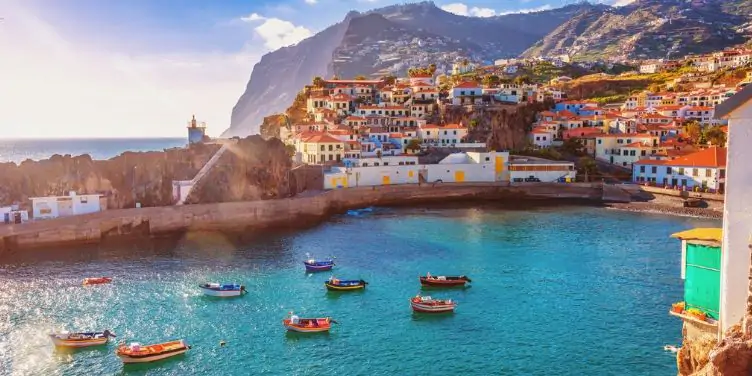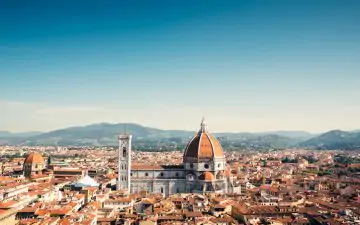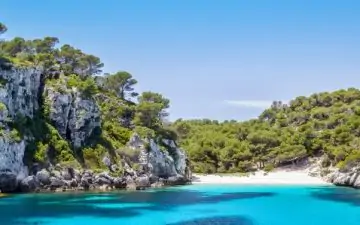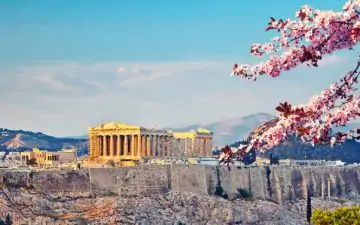Why You Should Take a Trip to Madeira

Before you visit the attractions mentioned below, it’s important to check their website information. Even if the attraction is open, you might need to pre-book and follow local guidelines on social distancing. Check if you need to wear a face covering during your visit.
Known as the ‘Floating Garden of the Atlantic’, Madeira is one of my favourite holiday destinations. Once a playground for the rich and famous, low cost flights and a range of accommodation options have made Madeira more accessible to all.
Situated in the Atlantic Ocean, 600km from Morocco, this Portuguese Island is a product of volcanic eruptions many millions of years ago. Volcanic peaks are a major feature of Madeira’s mountainous landscape and the rich soil, together with the temperate climate, are responsible for the vast amount of beautiful flowers that bloom throughout the year.
1. An Attractive Capital
Located on the sheltered south coast of the island, Funchal is a lively mix of old and new with a vibrant commercial district and quaint ‘old town’ area of individual shops, restaurants and cafes.
The cobbled streets climb steeply up into the surrounding mountains, so if you hire a car be prepared for a lot of driving in low gear. Nothing pleases me more than to stroll along the newly renovated promenade on a sunny afternoon. There are plenty of seats to take time to stop and admire the views while enjoying the local sweet treats, Patas de Nata. This delightful custard and pastry confection is now widely available outside Portugal, but the locally baked versions are a cut above!
2. Local History
To learn more about Madeira’s colourful history visit ‘The Madeira Story’ an interactive museum in the heart of Funchal’s old town.
The museum covers the island’s development and history over the years. From the turbulent years of piracy and war, when Madeira was seen as a prize possession for its trading routes, to modern-day tourism. I was fascinated to learn about the extensive network of water irrigation channels, known as ‘levadas’, constructed using slave labour.
I was able to trace the history and production of the islands famous export, Madeira wine, and take a look back at the early days of tourism, including the famous flying boat that operated out of Southampton belonging to Aquila Airways. It was this service that lured the rich and famous to Madeira and set the scene for the island becoming a luxury holiday destination.
3. The Famous Market
Another must see in Funchal is the famous Mercado dos Lavradores. This covered market is bursting with produce from the island and is a great place to shop for flowers, fresh produce and souvenirs.
You can stroll among the colourful flower hall where local shopkeepers still dress in national costume to add to the atmosphere. Vendors offer slices of exotic fruits to try as you browse the stalls. No samples are offered in the vast fish hall where displays of evil looking scabbard fish – a local delicacy, sit side-by-side with enormous slabs of tuna, an array of dried fish, octopus and squid.
4. Gardens and Views
One of the most popular tourist attractions is a ride up to the village of Monte by cable car. Leaving from the old town of Funchal, the route takes you up and over the city to the famous Monte Palace Tropical Gardens with breathtaking views all the way. The gardens are a delight of grottos, waterfalls, lakes and fountains with glorious floral displays.
An alternative way back down to Funchal is to experience the traditional wicker toboggans, which will whisk you back down hill as far as the suburb of Livramento.
This form of transport appeared in the 1850s as a quick way for villagers in the town of Monte to travel down the steep hill into Funchal. Two men, dressed in a traditional white costume with distinctive straw hats, steer and guide the toboggan, using only their rubber soled shoes as brakes. This is an unforgettable ride, but not for the faint hearted! I have to admit, I gave it a miss myself!
5. Get your Hiking Boots On
Walkers will enjoy exploring the ‘levadas’ – man-made irrigation canals that were built to transport water from the wet northern side of the island to the dry south.
Some walks involve pitch black tunnels where torches are required adding an air of excitement and anticipation. A visit to the famous ‘Levada of the 25 Springs’ will lead you to the perfect picnic spot beside the gushing waterfalls, with a chance to dip your toes in the crystal clear waters.
Another memorable hike that I enjoyed is along the eastern peninsular of Ponta de Sao Lourenco. The path resembles a switchback road as it swerves up and down, hugging the coastline, first to the north and then around a corner with stunning views to the south. The sea is usually more dramatic as it crashes into rocks on the north side while the south has calmer with deep blue waters and inviting bays.
Madeira really is an island for all seasons and can be as relaxing, or invigorating as you want it to be, I shall be returning as soon as I can.










